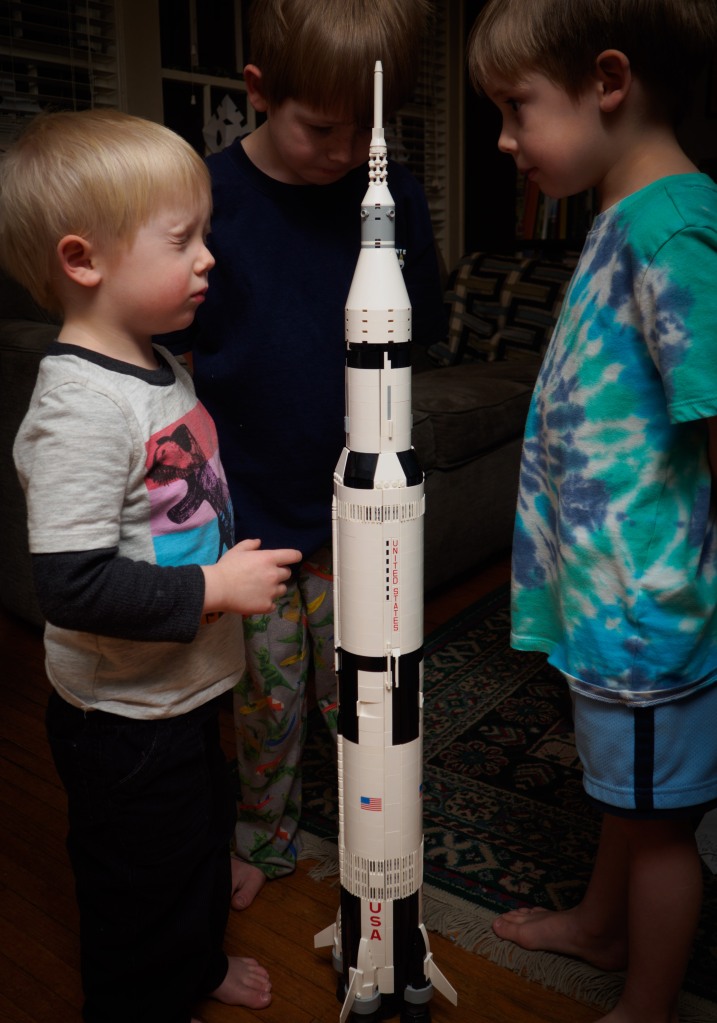
When my oldest was a preschooler, my wife Beth took her to a weekly music group at the Catholic church, called “Making Music, Praying Twice.” Yes, Catholics are terrible at branding programs (ever hear of the Catholic “Fortnight for Freedom?”), but there’s a reason for the clunky title. The name refers to a saying attributed to St. Augustine: The one who sings, prays twice.
Is that just a nice-sounding sentiment? Actually, no. It points at a subtle but crucial difference between Catholic and Protestant spirituality. Both can be good, but I think it’s worth looking at them more closely.
Protestants and The World
To show what I mean, let me start with my own Protestant kindergarten church school, where we loved singing the old classic “If You’re Happy And You Know It.” As far as I ever knew, here were the words:
If you’re happy and you know it, clap your hands!
If you’re happy and you know it, clap your hands!
If you’re happy and you know it, then your life will surely show it,
If you’re happy and you know it, clap your hands!
In verse 2, “Clap your hands” became “Stomp your feet,” verse 3 said to “Shout Amen!”, and then verse 4 rounded out the song with “Do all three!”
It wasn’t until I was an adult that I found out the song wasn’t originally Christian. In earlier versions of the folk song, the shout was “Hooray!”, not “Amen!”, and there was nothing about “your life” showing anything. The song said, “If you’re happy and you know, and you really wanna show it…”
Why the change? There was nothing offensive in the original song that would stop Christians from singing it. But there’s a long Protestant tradition of bringing secular things into the church by tweaking them to make them explicitly Christian. The biblical word “Amen!” was an easy way to baptize the folk song for us to sing at church school.
All this is fine as far as it goes. I still love that song, which is forever tied up with my affection for my dear friend and minister Tim Lewis, who taught it to us at South MacArthur Church of Christ. Similarly, one of my favorites hymns is the Christianized version of Beethoven’s “Ode to Joy.”
Catholics and The Beautiful
So, how would Catholics do it?
As it turns out, the “Making Music, Praying Twice” program also has “If You’re Happy And You Know it,” alongside a variety of Christian and secular songs and rhymes. The lyrics on that album:
If you’re happy and you know it, clap your hands!
If you’re happy and you know it, clap your hands!
If you’re happy and you know it, and you really wanna show it,
If you’re happy and you know it, clap your hands!
The second verse is, “If you’re angry and you know it, stomp your feet.” Among the several other verses is, “If you’re noisy and you know it, shout hooray!”
Now, if I had heard this as a teenager, I would have been irate. Since I only knew the Protestant version of the song, I very likely would have jumped to the conclusion that someone had “taken God out” of the song. I would have had things exactly backwards, which is a good reminder of how easy it is to pick foolish fights when we don’t understand history and culture.
But back to the point, what are the Catholics doing here? Are they not familiar with the Christian version of the song? Why not just shout “Amen!” like we Protestants did in church school?
The answer is in the old saying: The one who sings, prays twice, which points at a core principle of Catholic Spirituality: Everything beautiful and true and good is from God. Anything that is truly beautiful––a song, a novel, a sculpture, a poem, a deed––already glorifies God. Adding Christian words to an already-beautiful song is unnecessary, and it risks marring the beauty of what was already there, while implying judgment on the original as somehow inadequate because of not naming God explicitly.
Folk songs always grow and change, so it’s not as if Protestants are trying to touch up the Mona Lisa when we shout “Amen!” On the other hand, consider the evangelical adaption of Leonard Cohen’s “Hallelujah,” which you can find on youtube if you’re interested. Cohen’s song is one of the great works of art of our day. It’s spiritual, but in a dark and complex and even slightly profane way if you read all the verses. I wouldn’t blame a Christian for not wanting to embrace it fully, though as a Christian I still find it a worthy song. But either way, it wasn’t written for church, and in my opinion it shouldn’t be adapted for church.
When we consider what to Christianize, our choices send a crucial message to our kids, about how we see the world. Should we should fully embrace the secular world whenever possible, then set ourselves apart only at key points of real difference? Or should we always look for ways to be more explicitly Christian, lest we forget and slip into secularism? I can quote Bible verses and Christian tradition on both sides of that debate, but this isn’t the place to get into theological weeds.
My own view, as I’ve written here before, is that trying to Christianize everything just makes it easier to think we’re following Christian values, whether we are or not, and that Christians have plenty to learn from secular values in any case. So I approach this with a “small-c” catholic method: (1) Embrace everything beautiful in the world, free from judgment, wherever possible; (2) Give my kids plenty of beautiful Christian works to enjoy as well; (3) If something is beautiful but problematic, use my best discretion.
Either way, as parents it’s worth being intentional: What are our values and what message do we want to send?








